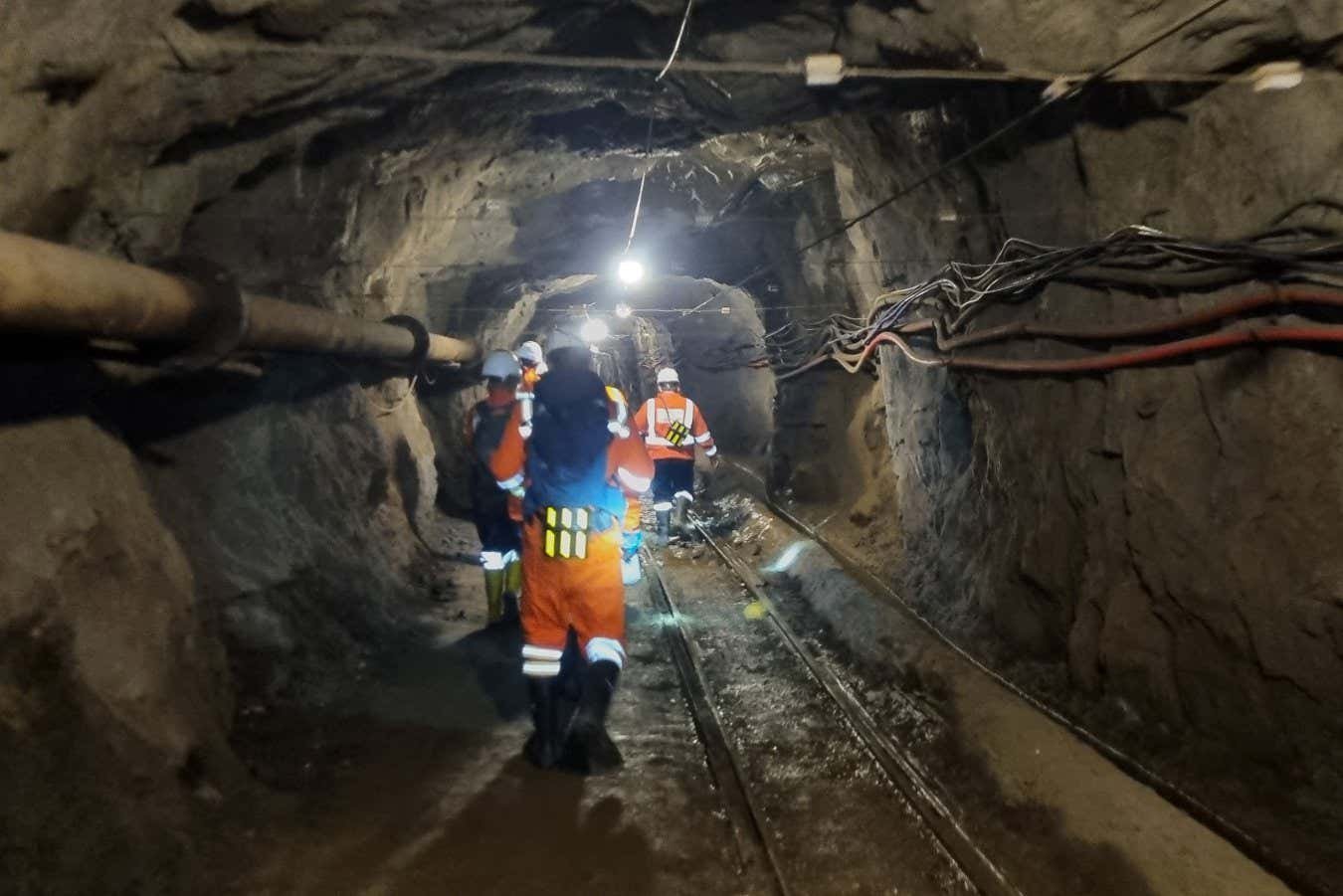
An Albanian mine where hydrogen naturally seeps up through the rock
F-V. Donzé
The largest flow of natural hydrogen gas ever recorded has been measured deep in an Albanian mine. The find could help us work out where to locate underground deposits of this clean fuel.
“The bubbling is really, really intense,” says Laurent Truche at the University of Grenoble Alpes in France, who measured the gas in a pool of water nearly a kilometre underground. “It’s like a Jacuzzi.”
Companies are now searching for deposits of natural hydrogen all over the world as a source of clean fuel, but evidence for large accumulations of this “gold hydrogen” is sparse. Most claims about vast hydrogen deposits beneath the surface rely on extrapolation, rather than direct measurements.
In search of more substantial proof, Truche and his colleagues descended into the Bulqizë chromite mine in Albania, where hydrogen gas seeping out of the rocks has caused several explosions. The mine is also located within an exposure of iron-rich rock, known as an ophiolite. Water is known to react with such rock to generate hydrogen in other places, such as Oman.
The researchers found that the gas bubbling from the pool was more than 80 per cent hydrogen, with methane and a small amount of nitrogen mixed in. It was flowing at a rate of 11 tonnes per year, almost an order of magnitude greater than any other flows of hydrogen gas measured from single-point sources elsewhere on Earth’s surface.
To determine the source of the gas, the researchers also modelled different geological scenarios that could produce such a flow. They found the most likely scenario was that the gas was coming from a deeper reservoir of hydrogen accumulated in a fault beneath the mine. Based on the geometry of the fault, they estimate this reservoir contains at least 5000 to 50,000 tonnes of hydrogen.
“It’s one of the largest volumes of natural hydrogen that has ever been measured,” says Eric Gaucher, an independent geochemist focused on natural hydrogen.
But it still isn’t a huge amount, says Geoffrey Ellis at the US Geological Survey. However, evidence for a stable accumulation of hydrogen supports the notion that much more is stored underground, he says. “We really should be looking deeper.”
Topics:

